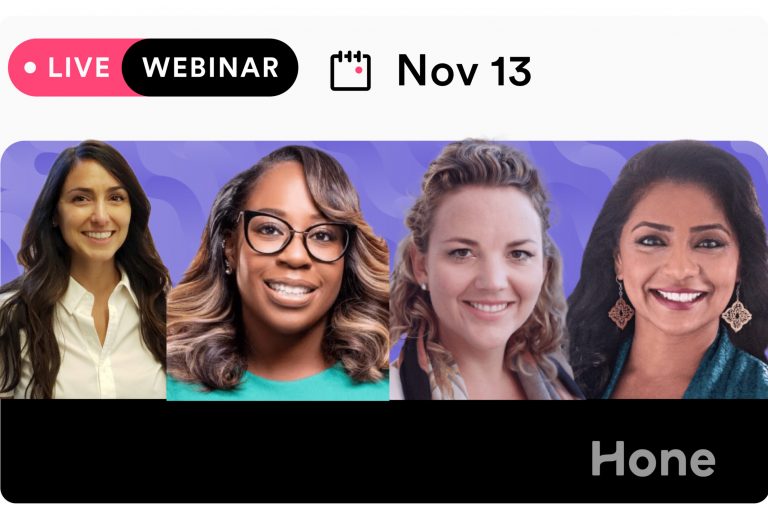What is Goal Setting?
The definition of goal setting is the process of defining specific, measurable, achievable, relevant, and time-bound (SMART) objectives that an individual or organization wants to achieve. The process typically involves defining long-term aspirations and breaking them into smaller, intermediate goals that can be tracked and achieved over time. This helps to ensure progress toward the overall objective and provides motivation and direction for the individual or organization. By setting goals, people and organizations can clarify their priorities, focus their efforts, and increase their chances of success.
Typically, workplace goals are collaborative between a manager and a direct report. They focus on the employee’s professional growth and their desired role. Management may reward employees for completion or reaching targets.
Workplace goal setting can measure performance and evaluate development progress. In addition, they may suggest necessary upskilling or ongoing education reach these goals.
Why is Goal Setting Important?
Motivated workers drive performance and productivity. They have a positive influence on the business’s success. Employees are more enthusiastic when they have a focus and feel valued by their employer.
The benefits of encouraging goal setting include the following:
- Boosting employee work engagement, motivation, and job performance. Skill-building gives them the means to achieve those goals.
- Increasing the company’s competitive edge. Collaboration can drive growth when the business’s and employees’ goals align.
- Improving employee retention rates and reducing turnover. A LinkedIn survey reported that 94% of employees would stay with their employer longer if in learning and development.
Promoting employee engagement should be a priority in any industry. Setting development goals is one of the most effective ways for staff to feel present and driven.
Goal Setting and L&D
Goal setting and learning and development programs (L&D) are interconnected because they both support personal and professional growth and improvement. L&D activities can help individuals achieve their goals by acquiring new skills, knowledge, and experiences. At the same time, participating in learning and development programs can also help individuals set new, more challenging goals as they continue to grow and develop. Thus, goal setting and learning and development programs work together to support ongoing personal and professional growth.
10 Goal Setting Frameworks
The goal setting framework offers structure and develops direction and focus. In addition, the framework cultivates accountability and sets expectations.
A multitude of frameworks exist. Each organization needs to ensure its framework matches its team. The following are the top 10 frameworks.
1. SMART Goals
SMART stands for specific, measurable, achievable, relevant, and time-bound. It is a systematic and highly structured framework with precise goals.
- S – Specific goals ensure employers and employees are on the same page. Some managers also want goals to be sensible, significant, and straightforward.
- M – Measurable goals allow employers and employees to track progress.
- A – Achievable goals should be attainable and fit into the employee’s schedule. The goal should also agree with the business’s objectives.
- R – Relevant (or reasonable) goals match the employee’s skills and position.
- T – Time-bound (or time-sensitive) goals have deadlines, so employees know when to finish them.
The SMART framework works best for short-term goals. However, its rigidity prevents flexibility for the execution of long-term objectives.
Management can change the SMART goals framework by adding ER. Managers evaluate and readjust employees’ objectives if a contingency plan is needed.
2. Objectives and Key Results (OKRs)
The Objectives and Key Results (OKR) framework implements goals and monitors the progress. OKRs have tasks that drive progress. Three to five key results are usually manageable for quarterly periods.
The OKR framework is for groups like the entire company or department. This approach holds every employee accountable for the business’s growth.
3. Big, Hairy, Audacious Goals (BHAG)
The Big, Hairy, Audacious Goals (BHAG) framework establishes a massive, long-term goal. However, it can take a long time to achieve the objective, such as 10 to 25 years.
The goal aims to revolutionize the company or even the industry. It can be effective for inspiring passion and excitement to achieve something monumental.
A BHAG has a clear purpose of keeping employees aligned with the overarching goal. Therefore, it should reflect the company’s core values and mission.
But the framework needs to break down the goal into simpler ones. Then, management and employees must figure out how to accomplish it.
4. Backward Goal Setting
The Backward Goal framework first plans the result and then works backward. First, it breaks down the overarching goal into smaller, supporting objectives. And then, those are further divided into tasks and targets.
This framework gives teams a roadmap to attain the overall goal. Backward planning better motivates employees by reducing time pressure. The group focuses on the processes and creates more accountability.
A Backward Goal framework benefits companies needing more clarity about their goal setting approach. But it can be complex if the goal is ambitious. First, management must determine whether the team has the time and resources for reverse planning.
5. Think Big, Act Small, Move Quickly Framework
The Think Big, Act Small, Move Quickly (BSQ) framework:
- Think Big when defining your ultimate goals.
- Act Small when establishing smaller targets to reach the significant objective.
- Move Quickly when setting the timeline for completing specific tasks.
The BSQ framework has fewer guidelines for defining goals. It also needs more focus on the activities to reach each smaller target.
6. Goal Pyramid
The Goal Pyramid establishes objectives in ascending order, fitting priority. The most critical goal is at the top of the pyramid, followed by large, medium, and small targets.
This framework connects the main objective to projects required to achieve the goal. And it links tasks to the actionable sub-tasks.
The goal pyramid is broad. It’s a comprehensive plan perspective without an actionable roadmap.
7. One-Word Goal Setting
The One-Word Goal Setting framework requires a single word to describe the year’s objective best. It aims to prevent overwhelming employees with many tasks and removes complex processes and tools typically needed in goal setting.
Word selection in three steps:
- Reflect on what the organization wants to achieve and needs to meet the goal. Goal setters need to reflect on time and resources to reach the objective.
- Brainstorm all the possible words that could help fulfill the intention.
- Choose the word most relatable to the company’s mission.
Without barriers, it reduces pressure and analysis paralysis. As a result, workers can stay focused on the most critical needs of the business and teams.
However, the One-Word framework must include essential details like timelines and milestones. As a result, it makes goals overly simplistic and reduces the chances of success. Plus, management cannot quantify whether the tasks align with the selected word.
8. Locke And Latham’s Five Principles
Locke and Latham developed five principles to improve the likelihood of goal setting success.
- Clarity – Vague goals make it difficult for employees to understand expectations. Goals need to be clear and concise.
- Challenge – Employees feel satisfied when they realize challenging goals. It motivates them to continue the work. But goals should be realistic, so workers don’t lose interest before starting.
- Commitment – Some employees may accept a goal simply because a supervisor gave it. Others may take it if they can participate in the decision-making process.
- Feedback – Employees need timely feedback on their performance from their superiors and peers. Feedback helps them to know where they should put in more effort.
- Task complexity – It will likely be ineffective if a goal demands complex tasks. Multiple, bite-sized plans help employees complete these tasks.
The framework sets out clear, ambitious goals without being overwhelming.
9. Tiered Goals Framework
The Tiered Goals framework divides goals into a timeframe, such as monthly, quarterly, and annually. An evaluation period lets the team recommit, reset, and remove goals as needed.
Annual goals should be achievable and challenging. Management should set at most four yearly goals. Then divide them into smaller targets over quarters. Monthly plans are action-oriented and should appear like a to-do list.
10. The Golden Circle
The Golden Circle framework prioritizes business objectives and aligns teams with the mission. The model comprises three circles, like a target or dartboard.
From the innermost circle:
- Why/Purpose – The motivation of the goal
- How/Process – The specific actions to attain the goal
- What/Result – The services or results.
Why is it Important That Goals be Measurable?
Measurable goals gauge progress and performance. They identify what to achieve and when the employee accomplishes the objective.
Measurable goals:
- Give employees a clear target. Goals should be specific and time-bound.
- Give employees direction. Workers feel more capable when objectives have a well-defined path and plan.
- Track progress. Employees are more likely to succeed and stay focused when they see their advancement. It can also improve their confidence as they celebrate hitting milestones.
A measurable goal can increase excitement and motivation because workers know when they’ve realized the target. Employees can recognize their achievements and improve in underperforming areas.
Goal Setting Training
Skills development often goes hand-in-hand with goal setting. An employee’s goal may require comprehensive training to build on a specific skill set. Goal setting is a critical aspect of the success of any business, and training employees on how to set effective goals can have a significant impact on the organization’s overall performance. Here are some reasons why:
- Clarity of Objectives: Goal setting helps to clarify the objectives of the business and gives employees a clear understanding of what they need to accomplish to contribute to the organization’s success.
- Alignment: When everyone in the organization is working towards the same goals, it ensures that all departments and individuals are aligned, which results in better teamwork and collaboration.
- Motivation: Setting clear and achievable goals can motivate employees to work towards achieving them, which can lead to increased productivity and a better overall work ethic.
- Measurement: Goals provide a way to measure progress and performance, allowing businesses to track their success and identify areas for improvement.
- Accountability: Goal setting encourages employees to take ownership of their work and be accountable for their performance, which can lead to a greater sense of responsibility and pride in their work.
Overall, training employees on effective goal setting can help businesses to achieve their objectives, improve performance, and create a more engaged and motivated workforce.
3 Workplace Goal Setting Examples
- Role-specific goals
Role-specfic goals are for the employee’s current or prospective position. These goals center around job performance, advancement, or personal productivity. Steps typically include training, upskilling, and increased responsibilities.
Some examples include:
- A Junior Marketing Associate works toward becoming a Marketing Specialist through on-the-job training.
- A top-performing employee wants to advance to a leadership role. Therefore, they agree to complete a manager-training program to manage and motivate direct reports.
2. Team-specfic goals
Team-specific goals are for employees to work together. These goals help organize teams and outline the roles and responsibilities.
- The marketing team’s goal is to release a new social media campaign next quarter. Management sets weekly milestones to ensure they are on time for the launch.
- An organization wants to generate 500 leads through an email campaign by the end of the quarter. The team lead creates a five-touchpoint email cadence for each employee. Management measures key performance indicators at the end of each week.
3. Individual growth goals
Individual growth goals may be professional or personal set by the employee. These goals can improve job performance and engagement even if not work-related.
- A manager wants to learn a second language. This new skill helps them connect and communicate with direct reports in their first language. It can also ensure cultural support in a global company.











